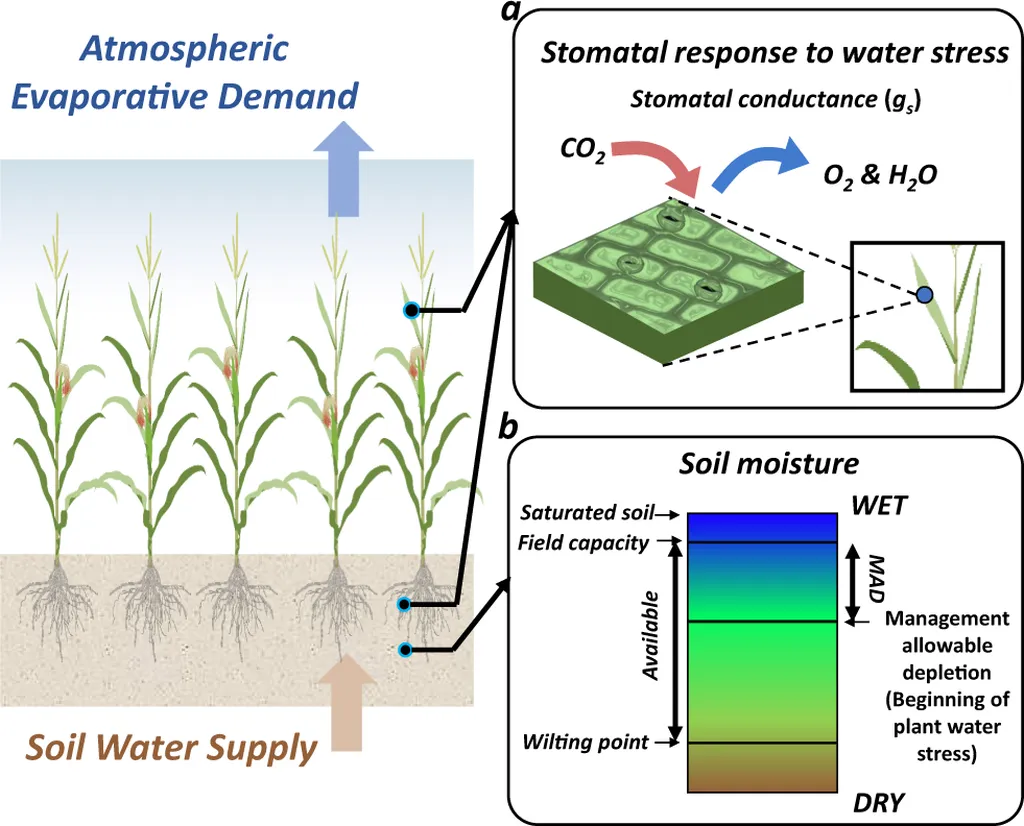In the face of escalating climate challenges, the agriculture sector is grappling with a critical question: how can we boost crop productivity without exacerbating climate change? A recent study published in *Earth’s Future* offers a promising framework to tackle this dilemma, particularly in the realm of irrigation—a practice that consumes a significant portion of global freshwater resources and contributes to soil greenhouse gas (GHG) emissions.
The research, led by Shashank Kumar Anand from the Department of Biological and Agricultural Engineering at Texas A&M University, introduces a dual-index framework to evaluate irrigation practices. This framework goes beyond the conventional focus on yield and water use efficiency, incorporating the climate impact of soil GHG emissions into the assessment.
At the heart of this framework are two indices: the Marginal Irrigation Water Productivity (MIWP) index and the Marginal Irrigation Climate Impact (MICI) index. MIWP quantifies the additional yield per unit of irrigation water, while MICI measures the associated changes in soil GHG emissions. “By considering both productivity and climate impact, we can make more informed decisions about irrigation practices,” Anand explains.
The study applies this framework to wheat and rice field irrigation studies, demonstrating its ability to assess irrigation across different crop systems. Crop model simulations further illustrate how different irrigation practices map within the MIWP-MICI space, highlighting trade-offs between productivity and climate impact goals.
The commercial implications of this research are substantial. For the agriculture sector, this framework provides a consistent, quantitative basis for comparing irrigation practices. It enables farmers and agribusinesses to balance productivity with climate impact, potentially leading to more sustainable and profitable farming practices.
Moreover, this research could shape future developments in climate-smart agriculture. By providing a clear, multi-objective optimization approach, it could influence policy decisions, irrigation technologies, and farming practices. As Anand puts it, “Our approach offers a new lens to view irrigation, one that aligns with the goals of climate-smart agriculture.”
In an era where climate change and food security are pressing concerns, this research offers a valuable tool to navigate the complex interplay between productivity and climate impact. It’s a step towards a future where agriculture not only feeds the world but also protects it.

